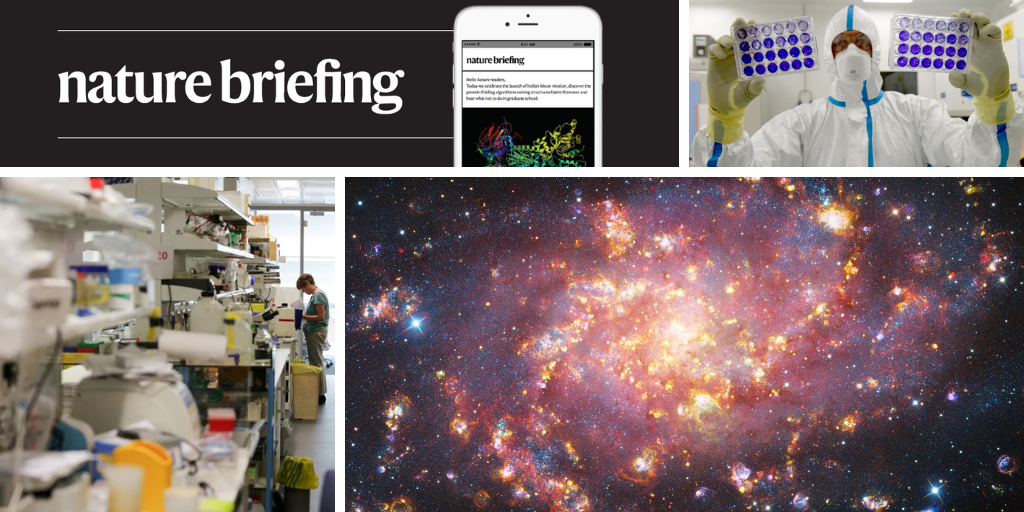
"Amid stiff competition, this snap of Messier 33 (M33), or the Triangulum Galaxy, was highly commended by the judges in the Galaxies category of The Royal Museums Greenwich's ZWO Astronomy Photographer of the Year competition. "There is a very prominent star-forming activity in M33, which results in a spectacular structure of emission nebulae," say photographers Bence Tóth, Péter Feltóti and Bertalan Kecskés.See more of the month's sharpest science shots, selected by Nature 's photo team."
"First, they implanted the skin cell's nucleus into an empty egg. Then, the team induced a process they called 'mitomeiosis'. This forces the egg to discard one set of chromosomes, which are replaced by that of the sperm during fertilization. Only a few of the resulting embryos developed beyond eight cells, but the research demonstrates the potential of the process for in-vitro fertilization using skin cells, the researchers say."
An award-commended image of Messier 33 highlights prominent star-forming activity and spectacular emission nebulae. A new induced cell-division process called 'mitomeiosis' enabled skin-cell nuclei implanted into empty eggs to discard one chromosome set and potentially produce viable eggs; only a few embryos developed beyond eight cells, but the method shows potential for in-vitro fertilization using skin cells. A prototype tool aims to track and predict the societal impacts of research to guide funders and investors, while critics warn that algorithmic predictions could create self-fulfilling prophecies. Calls urge virologists to adopt unified safety standards, and clinical trials are being disrupted by US funding cuts.
Read at Nature
Unable to calculate read time
Collection
[
|
...
]